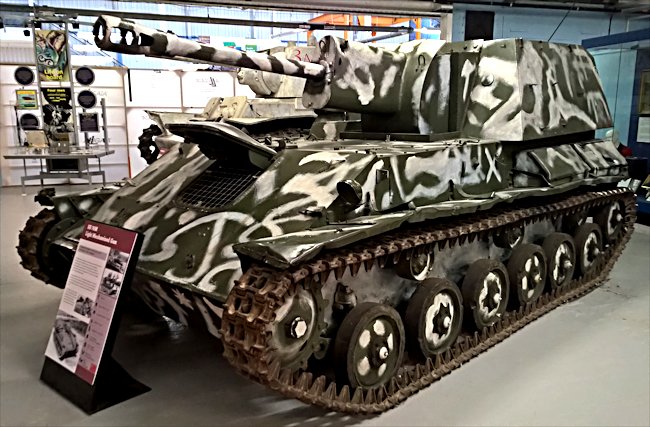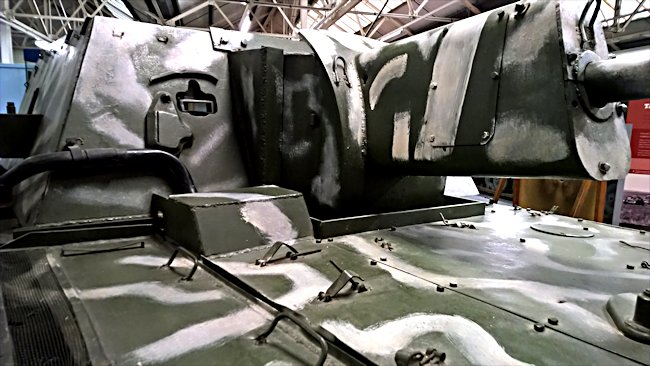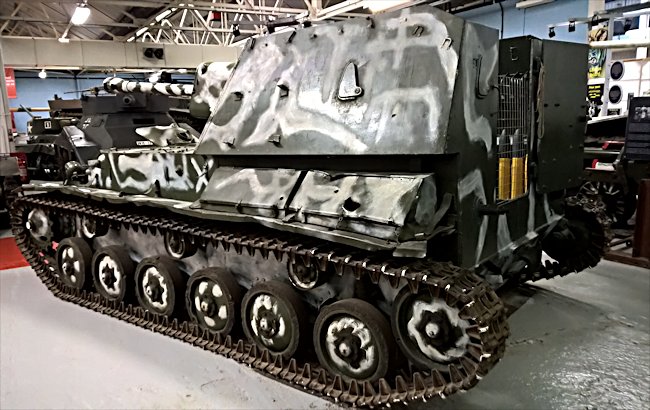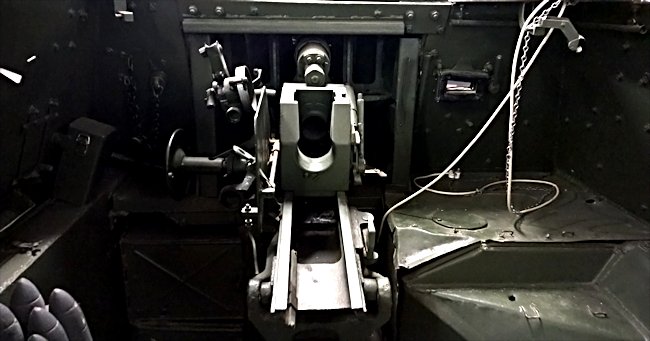The SU-76M Self Propelled Gun
This SU-76 Soviet SPG can be found at the Tank Museum, Bovington, Dorset, England

SU-76M Soviet SPG at the Tank Museum, Bovington
The Soviet Army desperately needed more armour to stop the invading German Panzer Divisions. The Samokhodnaya Ustanovka 76 SU-76 self propelled anti tank gun was designed and produced in 1942 to help meet this need and provide infantry units with protection from German armour. The Russian T-70 light tank was now outclassed when compared to the enemy Panzer III, IV and Tiger tanks. The Soviets decided to fit the 76 mm ZIS-3Sh effective anti tank gun to the top of a lengthened and widened T-70 light tank chassis. (An additional road wheel was added per side.)
When they altered the design of the T-70 chassis the engineers did not take the opportunity to improve the vehicles handling qualities. Some of the crews referred to the SU76 as 'the Bitch'. It had two GAZ-202 car engines mounted in 'parallel': each engine drove a separate tank track. Tank crews found it difficult to drive as they had to control to independent engines at the same time. The SU-76 crews did like its reliability and simplicity. A total of 14,292 vehicles were manufactured making it the second most mass produced military fighting vehicle in world War II, coming second only to the T34 tank. The SU-76M was the version that was massed produced.

Gun mantle on a SU-76M Soviet SPG
The 76mm gun used on the SU-76 was a very reliable accurate field artillery weapon. It could fire a wide range of high explosive HE rounds against infantry, soft skinned vehicles and artillery emplacements. It had very good anti-tank qualities. Its armour piercing AP shells could penetrate the armour of the German Panzer III and IV tanks. It could not penetrate the front armour of the newly arrived Tiger I heavy tank but it could penetrate the side and rear armour if one was spotted within 1000m range.
The fighting compartment was open to the elements. It made the crew vulnerable to grenades when fighting in urban locations and air burst shrapnel during counter battery fire. The armoured sides of the fighting compartment provided the gun crew with protection from normal mortar and artillery shrapnel as well as small arms fire. The armour would not provide much protection from a direct fire armour piercing shell fired by an enemy tank. the front armour was 35 mm thick and only 16 mm on the side.

Notice the side and rear small arms firing slots covered by triangular armoured covers on this SU-76M Anti Tank Gun
The SU-76m anti tank infantry support gun had a crew of four. It had a top speed on roads of 28mph (45 km/h) and an operational range of 200 miles (320 km). It was in operational services right up to the end of the war. The vehicle was fitted with a coaxial DT machine-gun. Each member of the crew were issued with personal weapons which could be used for close action fighting. The SU-76M fighting compartment had a number of armoured firing slots in the side and rear. The protective cover could be unlocked and it would swing down on a pivot bolt. The crewman could then fire at advancing infantry through that hole without having to pop his head out of the top of the vehicle to take aim.

The 76mm gun of the SU-76 Soviet SPG
Bovington's SU-76
The SU-76 at the Tank Museum in Bovington is a later model of the SU-76 which had a slight redesign of the rear end. It was used by Communist forces during the Korean War where it was captured by the Allies.
Where can I find other preserved Soviet SU-76M SPGs?
- Militärhistorischen Museum der Bundeswehr, Dresden, Germany
- Heeresgeschichtliche Museum, Vienna, Austria
- Polish Army Museum, Warsaw, Poland
- Polish Army Museum, Fort IX Czerniakowski, Warsaw, Poland
- Armoured Weapons Museum, Land Forces Training Centre, Poznań, Poland
- Muzeum Oręża Polskiego w Kołobrzegu, Kołobrzeg, Poland
- Jacek Kopczyński Collection, Łódz Poland
- Army Technical Museum, Lesany, Czech Republic
- Military Barracks, Banja Luka, Bosnia and Herzegovina
- Eesti Vabadusvõitluse Muuseumi, Lagedil, Estonia
- Korsun-Shevchenkivskyi, Cherkasy Oblast, Ukraine
- Muzeul Militar National, Bucharest, Romania
- National Museum of Military History, Sofia, Bulgaria
- Military area near Sliven, Bulgaria
- Stored in a barrack, near Vratsa, North Bulgaria
- Central Armed Forces Museum, 2, Ulitsa Sovetskoi Armii, Moscow, Russia
- Kubinka Tank Museum, Moscow, Russia
- Military Historical Museum of Artillery, Engineer and Signal Corps St.-Petersburg, Russia
- Pskov, Pskov Oblast, Russia
- Vadim Zadorozhny Museum, Arhangelskoe, Moscow Oblast, Russia
- Mytishchi, Moscow Oblast, Russia
- Sapun Gora, Sevastopol, Crimean Peninsula, Russia
- Kremlin of Nizhny Novgorod, Nizhny Novgorod Oblast, Russia
- Museum of military equipment "Battle Glory of the Urals" Verkhnyaya Pyshma, Sverdlovsk Oblast, Russia
- The Tank Museum, Beijing, China
- Victorious Fatherland Liberation War Museum, Pyongyang, North Korea
- U.S. Army Center for Military History Storage Facility, Anniston, AL, USA
- National Museum of the U.S. Marine Corps storage lots, Quantico, VA, USA
- Bovington Tank Museum, England
- SU76i - Central Museum of the Great Patriotic War 1941 - 1945, Park Pobedy, Moscow, Russia
- SU76i - UMMC Museum of military equipment 'Battle Glory of the Urals Verkhnyaya Pyshma, near Yekaterinburgt, Sverdlovsk Oblast, Russia
- SU76i - Sarny, Rivne Oblast, Ukraine
- Source - Pierre-Oliver Buan - http://the.shadock.free.fr/Surviving_Panzers.html
WW2 tank books
